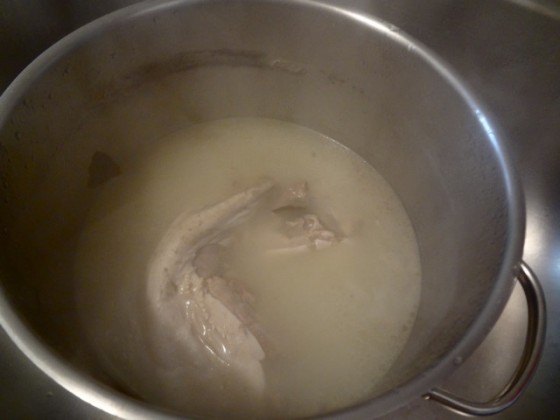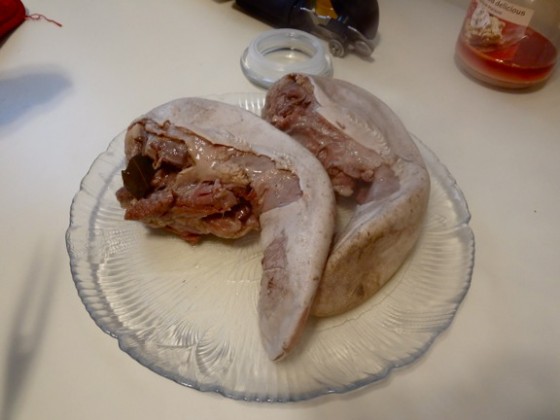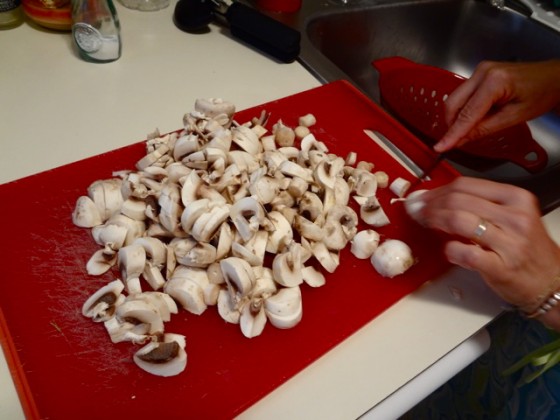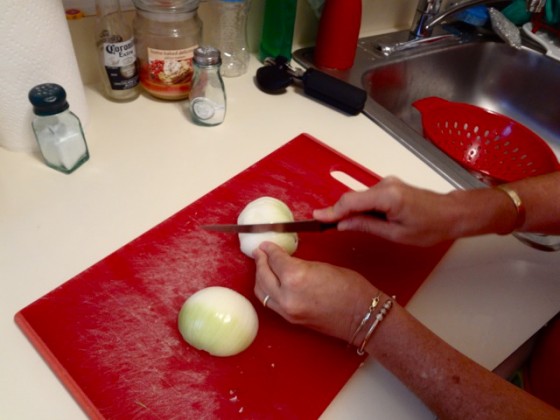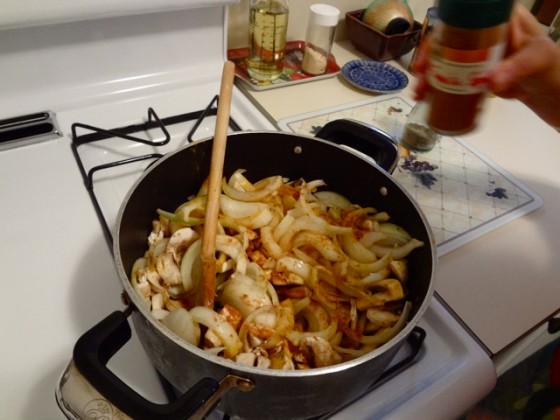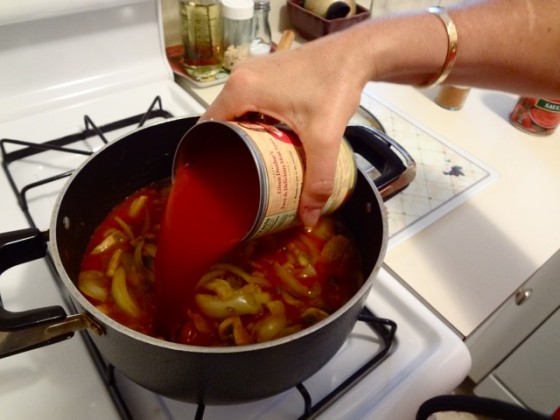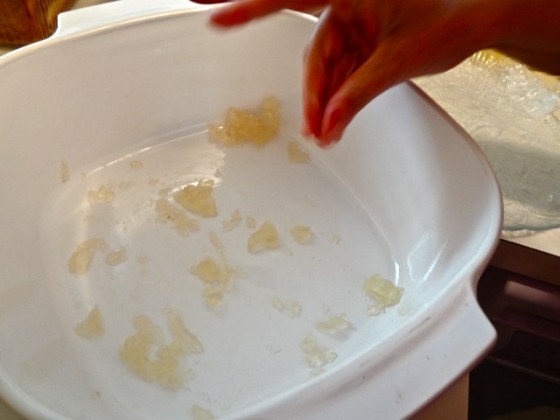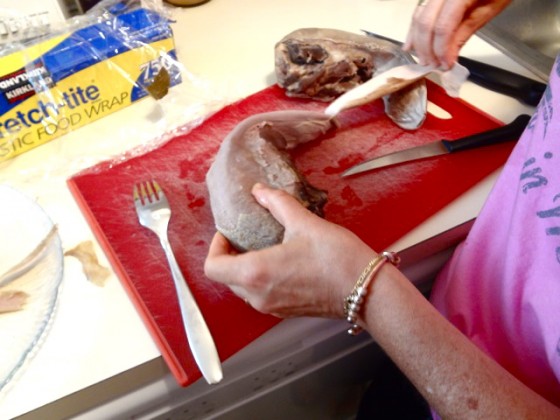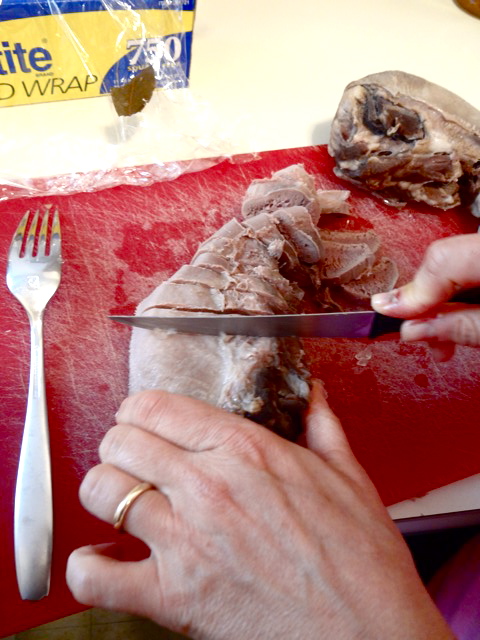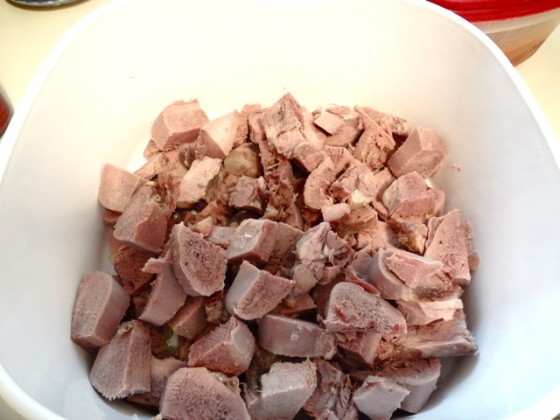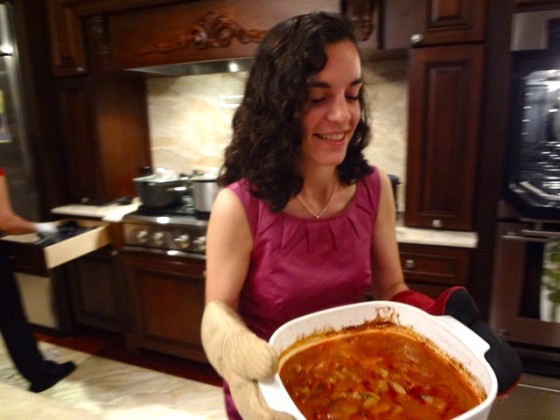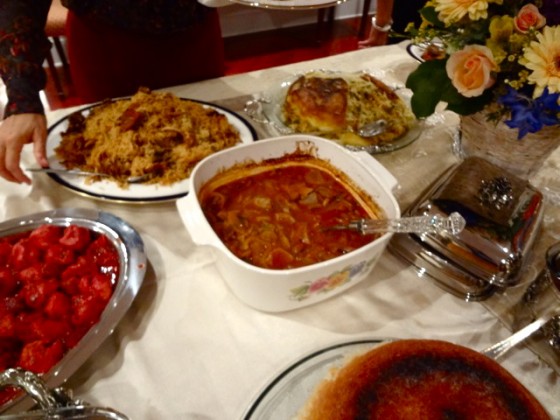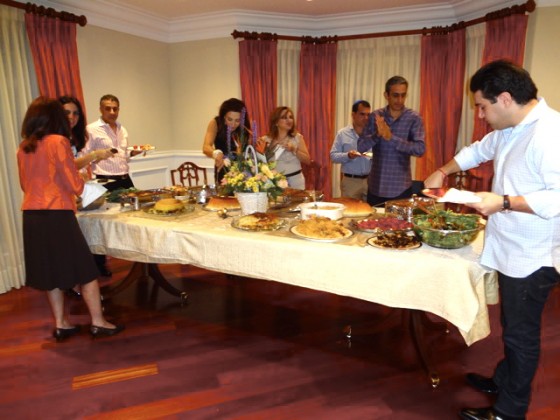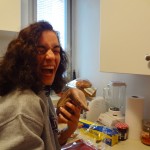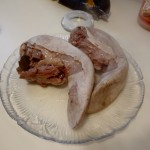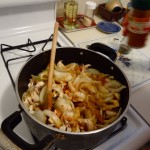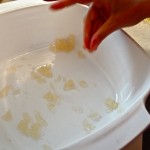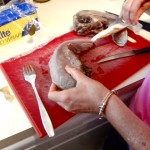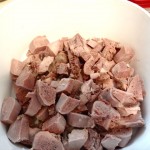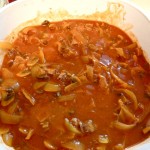I’m excited to present our student cooking series, “The Kid Stays in the Kitchen.” Each week a student is assigned to cook a traditional dish with a friend or family member and document the experience in photos and words. This week features Tammi, whose mom merges Iraqi-Jewish and Russian-Jewish traditions into their family meals, and together they cooked zaboon.
When I was younger, I was a very picky eater. But zaboon, I devoured. I am one-fourth Russian-Jewish and three-fourths Iraqi-Jewish, and cow tongue is prepared in both cultures. My mom, half Iraqi and half Russian, combines the cuisines. The stew has an Ashkenazi base of tomato sauce, onions and mushrooms, but the spices, turmeric and cayenne, are as Iraqi as it gets. The name of the dish, zaboon, is the Arabic name, and literally means tongue. It was the perfect parts sweet, tender, and a taste I can only associate with my home. Refusing to mix it myself as a child, I have vivid memories of my dad folding the rice into the stew. And then one day, when I was at that age when you begin to make connections, about seven or eight, I realized that zaboon was actually cow tongue. Eeeew! And that was it. I cut myself off cold turkey.
About a year later, I was unable to resist any longer. I got over the stigma — probably because everyone in my family seemed to enjoy it — and indulged in the delicious, aromatic stew. I have memories of eating it quite often since then, always on Friday nights for our special Shabbat meal. It is also eaten on Rosh Ha’Shanah, the Jewish New Year, at the Seder table. According to Iraqi tradition, zaboon is eaten so that our year should be “l’rosh ve lo l’zanav”, like the head and not the tail. And during Rosh Ha’Shannah, when my mom makes this dish for the whole family, I make sure to be the first person in line at the buffet to scoop some onto my rice before everyone else devours it. Now, however, I mix it myself. — Tammi H.
Recipe for Zaboon by Tammi’s mom, Ellen
Ingredients
- 2 cow tongues
- 2 dried bay leaves
- Water
- 2 cooking onions
- 1 tablespoon oil
- 3 tablespoons water
- 2 cans of tomato sauce – 15 ounces each
- 10 ounces mushrooms – 1 package
- Ground pepper*
- Turmeric*
- Cayenne pepper*
*Add to taste
Day One
Let the zaboon defrost over night. In the morning, boil the zaboon in enough water to suspend it for three hours and add the two bay leaves. This will clean the zaboon and the bay leaves will cut the grease. After two hours, test the zaboon for tenderness with a fork. Cook until the fork should come out with ease (about three hours). Take the zaboon out and place on a plate to cool. Once cool, cover and refrigerate.
Day Two
Skin and chop the onions. Cut the onion in half, put the flat side on the cutting board and proceed to chop in half-inch slivers. Clean and chop the mushrooms in fourths, lengthwise. Pour the oil into a pot, and then add the onions and mushrooms. Sautee for 10 minutes and stir occasionally. As you are stirring, add a splash of water, pepper, turmeric and cayenne pepper. Let sit for ten minutes, or until the mushrooms and onions have softened and released juices. Then, pour in one can of tomato sauce, fill it half way with water, and pour the water into the pot. Then pour in half of the other can of tomato sauce. Let the mushrooms, onions, and sauce boil with the lid on for about ten minutes. Then, place it into a container, let cool, and place in the refrigerator until ready to cook. This allows the flavors to mature and mix.
Remove the zaboon from the refrigerator and peel the outer thick skin (leather like). Slice each zaboon width wise in quarter inch slices. If you would like, cut the slices in half to make the pieces smaller. On the plate that the zaboon was on, a gel-like substance has formed, which is the solidified fat. Use the gel to line the bottom of the casserole dish. Place the zaboon on top of the gel. Pour the sauce on top. Mix the sauce and zaboon. Add water if the consistency is too thick. Pat it down with a fork to level. Cover with the lid, and bake in the oven at 350°F for 1 hour.


